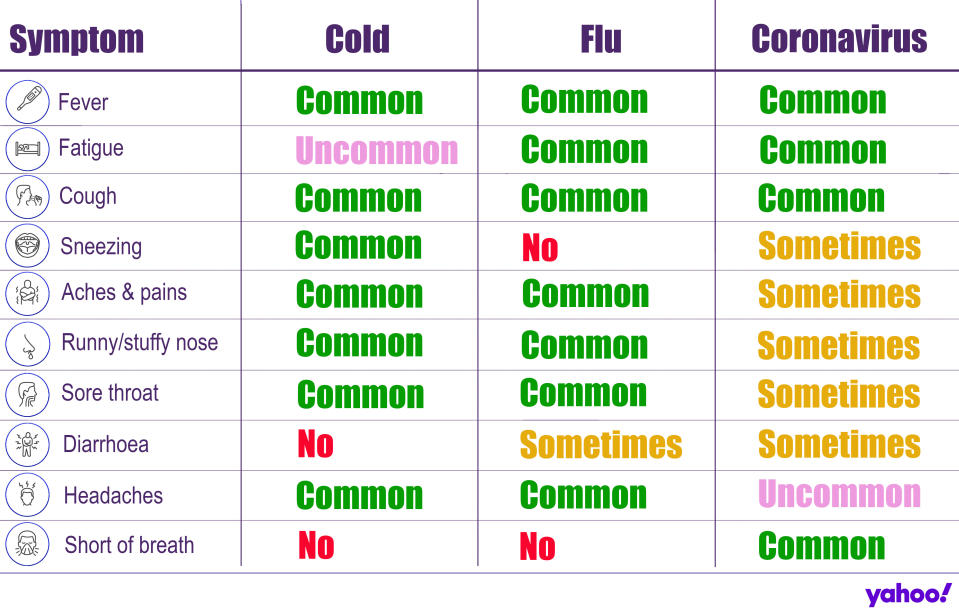Coronavirus: what to do if you think you've overcome the infection

More cases of the coronavirus are being reported every day.
The previously-unknown strain arrived during the UK’s cold and flu season, leaving many anxious they may be infected every time they get the sniffles.
Only hospital patients are being swabbed for the virus, with greater testing a key part of the government’s strategy to overcome the outbreak.
In the meantime, Boris Johnson has told entire households to self-isolate for 14 days if just one member has the tell-tale cough or fever, not even venturing out to buy “food or essentials”.
Once these two weeks are up, many may be left wondering what to do next.

The coronavirus is thought to have emerged at a seafood and live animal market in the Chinese city Wuhan at the end of last year.
Since the outbreak was identified, more than 227,700 cases have been confirmed in over 150 countries on every inhabited continent, according to John Hopkins University data.
Of these patients, more than 84,500 have “recovered” and are now testing negative for the virus.
Latest coronavirus news, updates and advice
Live: Follow all the latest updates from the UK and around the world
Fact-checker: The number of Covid-19 cases in your local area
Explained: Symptoms, latest advice and how it compares to the flu
Cases in China have been plateauing since the end of February, with no new “domestic” incidences being reported in the past 24 hours.
Europe is now the epicentre of the pandemic.
Italy alone has had more than 35,700 confirmed cases and over 2,000 deaths.
More than 56,200 people have been tested in the UK, of whom over 2,600 have come back positive and 128 patients have died.
Globally, the death toll has exceeded 9,300.
What to do if you suspect you have overcome the coronavirus
People who live alone and have coronavirus symptoms, even if mild, should stay at home for seven days.
If they live with others and are the first to show the warning signs, the “patient” should stay at home for seven days and all other household members for 14 days, regardless of whether they develop symptoms.
The 14-day period starts from the day the first person becomes unwell.
If another member of the household develops symptoms, that individual should then stay indoors for seven days, regardless of where they are in the 14-day “lockdown”.
Assuming a live-in relative develops symptoms late in the 14-day quarantine, they have to isolate for seven days, however, the rest of the household do not need to extend their isolation.
“The 14-day household-isolation period will have greatly reduced the overall amount of infection the rest of the household could pass on, and it is not necessary to restart 14 days of isolation for the whole household,” according to the government.
“Further isolation of members of this household will provide very little additional community protection.”
At the end of the 14 days, any family member who has not become unwell is free to go back to their normal routine.
Suspected patients can go back to normal after seven days, providing they feel well and no longer have a fever.
“The cough may persist for several weeks in some people, despite the coronavirus infection having cleared,” according to the government.
“A persistent cough alone does not mean someone must continue to self-isolate for more than seven days.”
This advice is based on the knowledge that patients remain infectious for around 14 days.
Scientists from John Hopkins University looked at 181 people who tested positive for the coronavirus between 4 January and 24 February.
They found most developed the tell-tale flu-like symptoms within five days, while nearly all (97.5%) endured fever, cough and breathlessness within 11.5 days.
The team predicted one out of 100 patients develop symptoms after 14 days.
Based on this, they said longer “quarantine” periods may only be required in “high-risk scenarios”, like among healthcare workers.
“As it stands there is little evidence to suggest a quarantine or self-isolation period of 14 days is not suitable,” Professor Jonathan Ball from the University of Nottingham said at the time.
Professor Peter Openshaw from Imperial College London agreed, adding: “Given that no isolation advice will be adhered to perfectly, there seems no justification for changing the recommendation that 14 days of isolation is sufficient.”

What is the coronavirus?
The coronavirus is a strain of a class of viruses, with seven known to infect humans.
Others include the common cold and severe acute respiratory syndrome (Sars), which killed 774 people during its 2002/3 outbreak.
As well as fever and cough, the coronavirus may trigger slight breathlessness and fatigue.
It mainly spreads face-to-face via infected droplets that have been coughed or sneezed out.
There is also evidence it can be transmitted in faeces and urine.
Early research suggests four out of five cases are mild.
In severe incidences, pneumonia can come about if the infection spreads to the air sacs in the lungs, causing them to become inflamed and filled with fluid or pus.
The lungs then struggle to draw in air, resulting in reduced oxygen in the bloodstream and a build-up of carbon dioxide.
The coronavirus has no “set” treatment, with most patients naturally fighting off the infection.
Those requiring hospitalisation are offered “supportive care”, like ventilation, while their immune system gets to work.
Officials urge the public to wash their hands regularly and maintain social distancing to ward off the infection.



